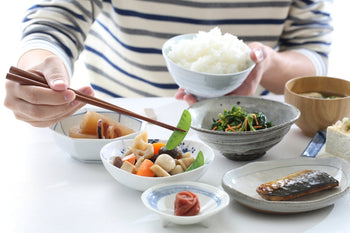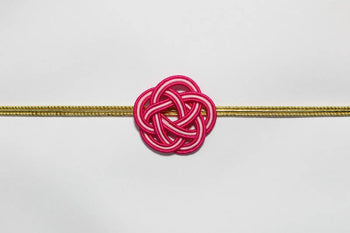

Table of contents
The Chewy Charm of Mochi
Mochi is a traditional Japanese rice cake made from glutinous rice, also known as "mochigome." Renowned for its signature chewy texture and subtle flavor, mochi has been a beloved staple in Japanese cuisine for centuries. This soft and stretchy delicacy is incredibly versatile—it can be eaten plain, grilled, steamed, or incorporated into both sweet and savory dishes. From mochi ice cream wrapped in delicate rice dough to sticky rice balls in hearty soups, its uses are as varied as they are delicious. Mochi also has a unique mouthfeel that is satisfying and comforting, making it a favorite not only during holidays but also as an everyday treat. As more people around the world discover the joy of chewy textures and delicate flavors, mochi continues to capture hearts across cultures.

A Global Sensation
Once exclusive to Japan, mochi has found its way into kitchens, bakeries, and cafés around the globe. Its soft yet resilient texture offers a delightful contrast to the creaminess of ice cream, the richness of chocolate, or the crispness of roasted nuts. In the United States and Europe, mochi ice cream has surged in popularity, often found in supermarkets, dessert bars, and even fine-dining menus. Food innovators have embraced mochi for its ability to enhance both flavor and texture in creative dishes—from mochi doughnuts to fusion-style sushi rolls wrapped in mochi skin. Beyond its taste and texture, mochi also carries an element of novelty and fun, especially for those trying it for the first time. Its global rise reflects a broader appreciation for traditional foods reimagined for modern palates, turning mochi into not just a dessert, but a culinary phenomenon.

Cultural Significance
In Japan, mochi is more than just a delicious treat—it is deeply woven into the cultural and spiritual fabric of society. Mochi is often associated with purity, longevity, and fortune, making it a popular food during Shinto rituals and family celebrations. During the New Year (Oshōgatsu), households display kagami mochi—two round mochi cakes stacked together and topped with a bitter orange—as a symbolic offering to the gods. Mochi is also enjoyed during traditional festivals such as Hina Matsuri (Girl's Day), Children's Day, and Tsukimi (Moon Viewing), each with its own specific mochi variety and meaning. The act of making mochi, particularly through mochitsuki (the communal pounding of rice), emphasizes harmony, teamwork, and tradition. It serves as a reminder of shared history and values, bringing families and communities together through the simple act of food preparation.

Diverse Flavors and Forms
While traditional mochi is typically filled with sweet red bean paste (anko) and dusted with rice flour, today’s mochi landscape is far more diverse. Modern interpretations include fillings like chocolate ganache, matcha cream, custard, strawberry jam, or mango purée, appealing to all age groups and taste preferences. There are even savory versions, such as mochi wrapped in seaweed and lightly grilled with soy sauce (isobe-yaki), or mochi added to soups and stews for a comforting chew. Mochi also appears in regional specialties like sakura mochi, a pink-hued version wrapped in pickled cherry leaves, and kusa mochi, which is infused with Japanese mugwort for an earthy flavor. Whether served as a delicate wagashi during a tea ceremony or as a novelty mochi pancake at a trendy café, its chameleon-like quality ensures it never goes out of style. The possibilities are endless for anyone looking to explore mochi in new and imaginative ways.

Crafting Mochi at Home A Hands-On Culinary Adventure
Making mochi at home is a delightful way to connect with Japanese culture and enjoy a fun, tactile cooking experience. The process is simple yet rewarding—especially when shared with friends or family. Although traditional mochi-making requires steamed glutinous rice and a heavy-duty mortar and mallet, you can create equally tasty versions using glutinous rice flour (shiratamako or mochiko) and everyday kitchen tools.
The Basics of Mochi-Making
To begin, mix glutinous rice flour with water until it becomes a smooth, thick paste. This mixture is then steamed or microwaved until it turns glossy and elastic. Once heated, the dough needs to be kneaded or pounded to achieve the desired springy texture. While pounding with a mallet is the traditional method, a sturdy spoon or rolling pin works just as well for small batches. The key is to stretch and fold the dough until it becomes cohesive and chewy.
Shaping Your Sweet Creation
After achieving the right consistency, divide the dough into small portions. To prevent sticking, coat your hands and the dough with cornstarch or potato starch (katakuriko). Flatten each piece slightly, add a dollop of filling like red bean paste or fruit, then gently fold and shape it into a ball. You can also leave it plain and cut it into bite-sized cubes, ideal for dusting with matcha powder or kinako for a minimalist treat.
Personalizing Your Mochi
Don’t be afraid to get creative! Try experimenting with natural colorings like beet juice, matcha, or cocoa powder to make your mochi visually exciting. You can also incorporate fillings such as Nutella, peanut butter, cream cheese, or seasonal fruits for a contemporary twist. Roll the finished pieces in coconut flakes, crushed nuts, or sesame seeds for added texture. Whether traditional or avant-garde, mochi-making at home is a fun way to bond with loved ones while crafting a truly unique dessert.
Mochitsuki The Heartbeat of Community
Although making mochi at home is a wonderful experience, nothing compares to the energy and excitement of a traditional mochitsuki ceremony. This communal mochi-pounding event, often held during year-end festivals or New Year’s celebrations, is a cherished part of Japanese culture that blends festive spirit with a strong sense of unity.
The Mochitsuki Experience
Mochitsuki events are dynamic and lively, often taking place in public squares, temples, or schoolyards. The air is filled with the rhythmic thud of wooden mallets hitting steamed rice, accompanied by cheerful music, warm food stalls, and community laughter. Children and adults alike gather to watch, participate, and of course, taste the freshly made mochi while it’s still warm and ultra-soft.
The Role of Teamwork
Mochitsuki isn’t just a physical act—it’s a carefully choreographed team effort. One person uses a large wooden mallet (kine) to pound the rice inside a traditional mortar (usu), while another person quickly wets and turns the mochi between each strike. Timing and trust are crucial, as any misstep could lead to a painful accident! This coordinated dance creates a sense of mutual reliance and bonding, reinforcing the communal spirit that defines Japanese festivals.

Where to Experience Mochitsuki
If you find yourself in Japan during late December or early January, seek out local mochitsuki events in shrines, community centers, or even department store rooftops. Some rural areas still uphold century-old traditions, offering the chance to not only watch but also participate in the mochi-making. These experiences provide deep insight into the importance of food, ritual, and togetherness in Japanese society—and the mochi you’ll taste fresh from the usu is like nothing else.
Share Your Mochi Adventures
Whether you’ve tried making mochi for the first time, discovered a new flavor at a café, or joined a lively mochitsuki celebration, we’d love to hear your story. Share your photos, recipes, and reflections with us on social media and become part of a growing community of mochi lovers around the world. Through every soft, chewy bite, mochi reminds us that tradition, creativity, and connection can live on in even the simplest of treats. Join us in celebrating this delightful and meaningful piece of Japanese culture—one mochi at a time.




